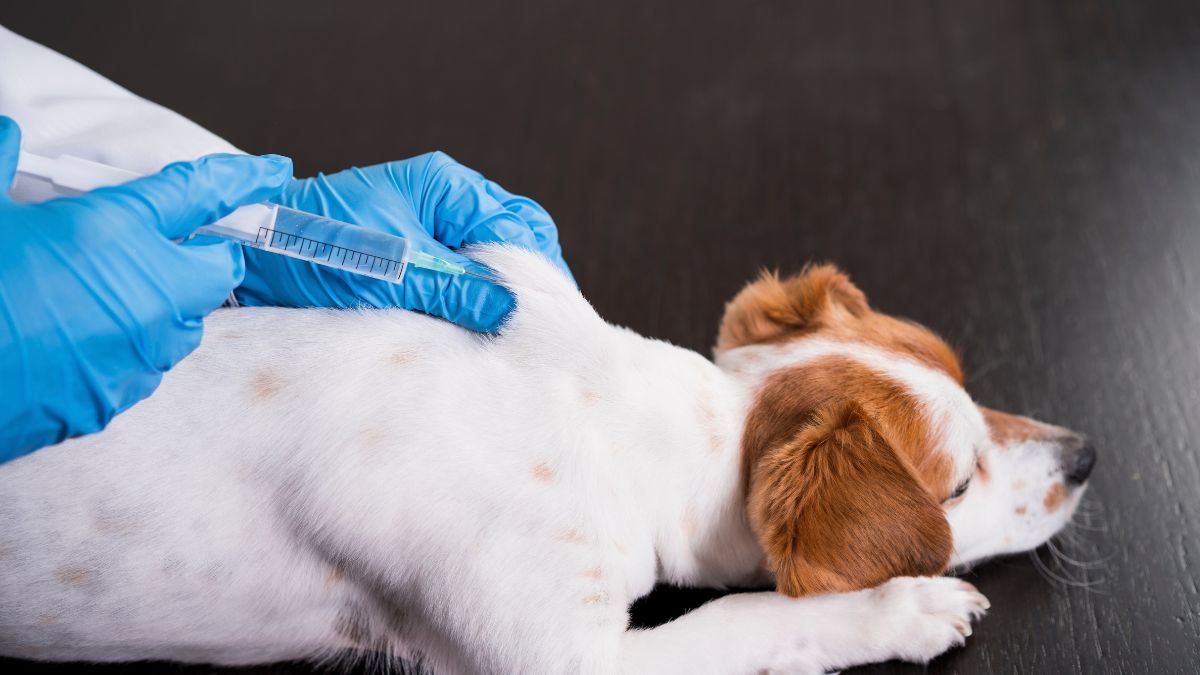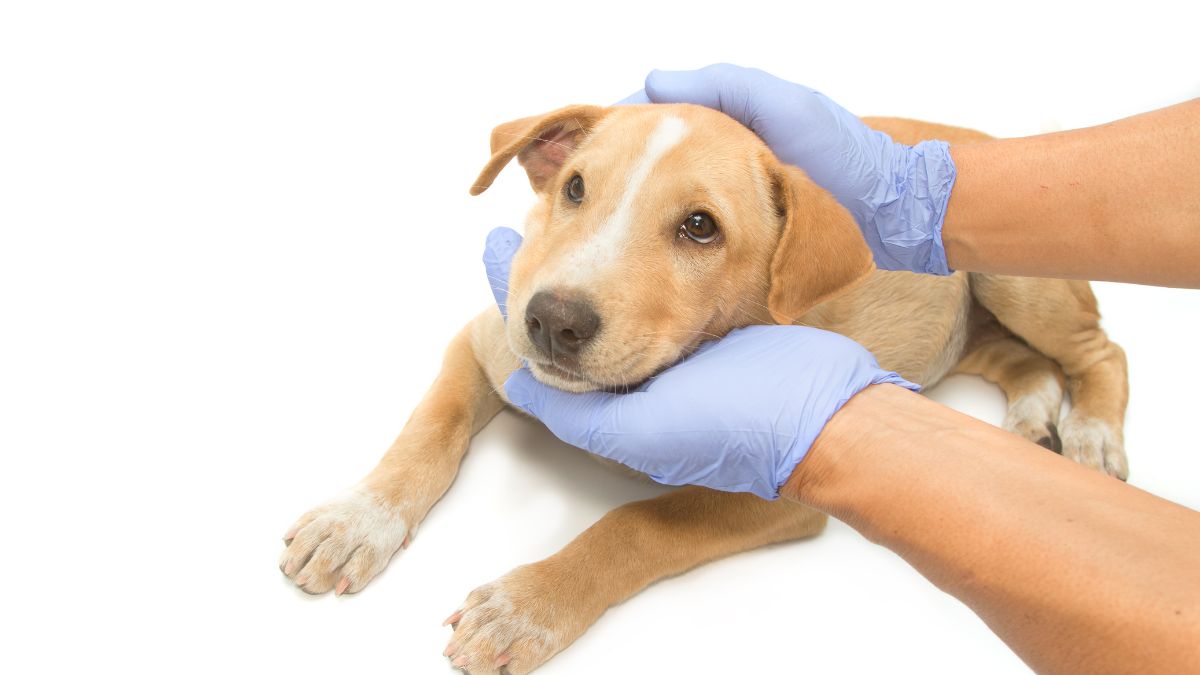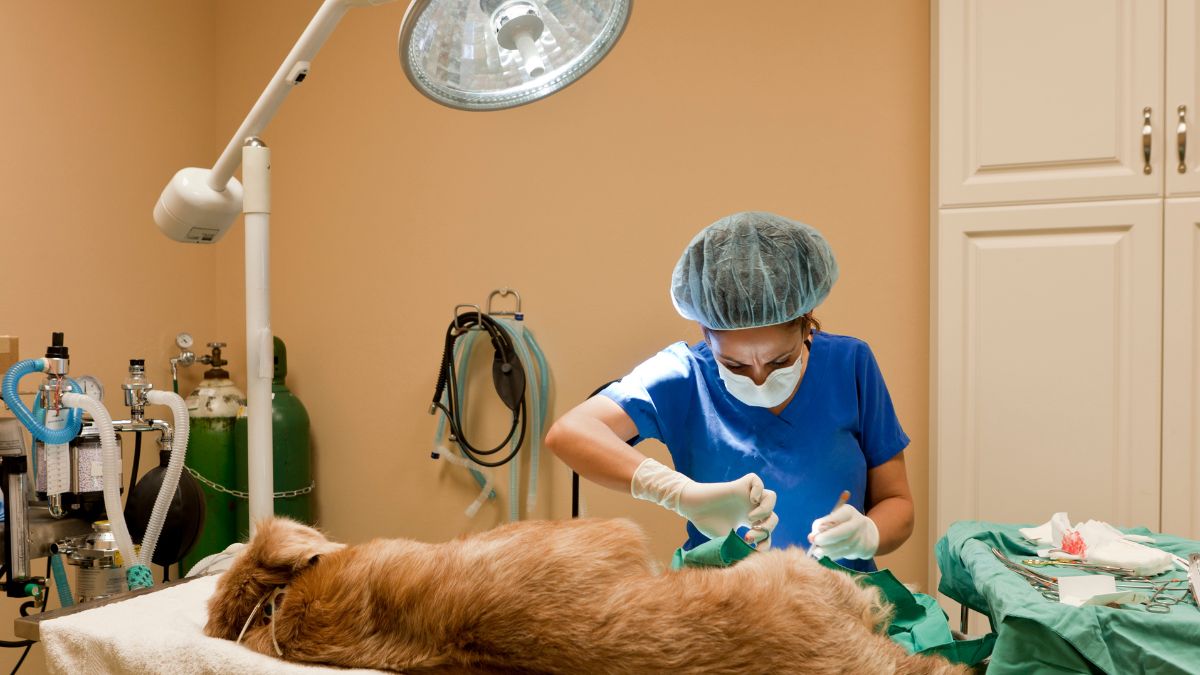If you’re a dog parent one of the worst things you can do is watch your dog get sick and to add to that difficulty they can’t tell us what’s wrong. While medicine is always advancing it’s still a good idea to keep ourselves aware of what diseases they might get from their environment or from other dogs. In this listicle, we’ll take a look at some of those diseases, their symptoms, and what you can do to help your dog survive. With all that out of the way, let’s begin.
10. Canine Parvovirus
Also known as Parvo, this disease attacks your dog’s heart and intestines. It’s a contagious and hard-to-cure disease that often involves your dog staying in the hospital to get treatment. However, this can be prevented if your dog gets his regular vaccine and check-up from your vet.
Symptoms: Your dog will have symptoms like vomiting, diarrhea, lethargy, loss of appetite, and eventually weight loss if he has contracted parvo.
Treatment: As mentioned, your dog will have to stay in the hospital to get monitored and medicine from your vet. This will improve his chances of survival as he receives supportive care.
9. Canine Influenza
Canine influenza or flu is a viral respiratory disease and is highly contagious. When dogs gather in large numbers and in closed spaces increases the risk of getting the flu. This disease can be transmitted through coughing, sneezing, sharing bowls, or any object contaminated by the virus.
Symptoms: The signs of influenza are similar to kennel cough which include coughing, nasal discharge, runny eyes, lethargy, and fever.
Treatment: Good hygiene and vaccines can prevent this disease from infecting your dog but if symptoms persist contact your vet immediately to get antibiotics and supportive care if needed. Isolation is also key to prevent this disease from spreading which will take up to 4 weeks or as advised by your vet.
8. Coronavirus
The Canine Corona Virus or CCoV is a disease that infects the intestines of canines. There are many types of coronaviruses and this variant is different from the one that became an epidemic a few years ago, thankfully CCoV doesn’t affect humans.
Your dog may get this from eating infected feces, or by eating from contaminated food bowls. This disease can be short-lived but it can give your dogs considerable abdominal discomfort if they get infected.
Symptoms: The first signs to look out for are diarrhea, lethargy, and weight loss. If your dog’s stool has a foul odor, contains blood or mucus, and has an orange tint he may be infected with CCoV.
Treatment: There is no specific treatment for CCoV but antibiotics can help prevent bacterial infections. Also, isolation, IVs, and withholding food for 24 hours after the diarrhea has stopped may stop the spreading of this virus.
7. Leptospirosis
Leptospirosis is a zoonotic infection that comes from ingesting an infected animal’s meat or feces or from contact with its urine. This means that it can be passed between animals and humans and your dog could become a carrier.
Symptoms: If your dog shows signs like fever, excess thirst, kidney failure, fluid in the chest and abdomen then he could be infected with leptospirosis.
Treatment: Your vet could give your dog antibiotics to help with recovery, however, it should be given as early as possible to increase the chances of survival. In addition, keeping your dog’s vaccines updated can protect your pet as well.
6. Canine Distemper
This is a preventable disease but could be fatal when left untreated. A relative of the measles virus in humans, this virus is transferable via direct contact and is airborne which makes it highly contagious.
Symptoms: This disease has two stages. In the first stage, your dog will experience fever, nasal discharge, and watery eyes. In the second stage, your dogs will suffer from neurological problems such as head tilting, paralysis, seizures, and convulsions.
Treatment: Since there is no cure, preventing this disease is the key to stopping it from spreading. Go to your vet and have him vaccinated for distemper and avoid contact with infected dogs.
5. Canine Hepatitis
Hepatitis is a disease caused by an inflammation of the liver in dogs and can be transmitted through the urine, nose, and eye discharge of an infected animal. Younger dogs are more at risk and may show signs within 2 to 5 days of exposure. However, older dogs may not show any sign of infection, and may resolve itself over time.
Symptoms: Puppies may experience severe symptoms like fever, stomach ache, edema, diarrhea, and possibly jaundice. If these symptoms are not stopped the disease will often be fatal.
Treatment: As with most viral diseases, there is no known treatment. However, Antibiotics can help control any bacterial infections. IVs, hospitalization, and specific medicines for the symptoms may reduce their severity.
RELATED:10 Deadly Parasites That Could Be Killing Your Dog Right Now
4. Canine Herpesvirus (HPV)
This disease is a reproductive problem and is a cause for concern for many breeders. This condition has a high mortality rate among puppies that are 3 months old or younger and is a major cause of stillbirths and abortions. A dog can contract this disease through saliva, sexual contact, nasal, or genital discharge, and can spread through the bloodstream causing severe harm. The virus can also be passed on from mother to puppy.
Symptoms: Breeders and pet parents should watch out for symptoms like failing to breastfeed or gain weight, excessive crying, body temperature that’s lower than normal, and lack of energy
Treatment: There is no known cure for Canine Herpesvirus and most puppies will not survive the infection. However, The virus is sensitive to heat, and keeping your puppies in warmer places will help kill the virus. In addition, getting the dog to eat, drink, or take antibiotics and medicines for diarrhea and other symptoms can also increase the chances of survival.
3. Heartworm disease
Heartworm disease is another ailment that can lead to death if left untreated. However, you can prevent it if your dog has regular vaccine shots from your vet. This parasite affects your dog’s heart, lungs, and other circulatory systems in the body and may cause many health problems even in the early stages.
Symptoms: There are a number of signs that your dog will exhibit when he is infected with heartworms. In the early stages, your dog will experience coughing, weight loss, breathing difficulty, and accumulated abdominal liquid.
In the last stage, which is considered the most lethal and untreatable, your dog will develop Cavan Syndrome which means that there are too many heartworms blocking his arteries and blood can’t flow normally.
Treatment: If your dog has been infected with these parasites he will need medicine that will kill the worms inside his heart. This entails 3 injections over a span of a month and is going to be confined in a hospital for the duration. If that doesn’t work surgery is the last option but will most likely be lethal for your dog, you need to consult your vet first for more information.
2. Rabies
This is the most well-known dog disease in the world. Your dog can get this disease if an infected animal’s saliva enters your dog’s open wounds. It’s a virus that’s deadly to dogs and humans alike because the virus takes about 2 to 8 weeks to develop fully and before it’s diagnosed it’s too late. No test can detect it in live animals and the best way is to wait for the animal to die and take tissue samples from it.
Symptoms: A change in behavior can be a sign of rabies. An infected dog can show aggressiveness, sensitivity to light and touch, and restlessness. The throat and jaw muscles can become paralyzed and foaming of the mouth will occur.
Treatment: The good news is this disease is preventable. As long as your dog is updated with his vaccines there’s nothing to worry about.
RELATED:10 Emergencies Every Dog Owner Must Understand
1. Cancer
Cancer is one of the most common diseases your dogs can get once they reach their senior years. Though more than half is curable, it is hard to detect, and most often it’s too late for to get treatment. Age, diet, environment, and genes are factors that also play a significant role in increasing the risk of cancer among dogs.
Symptoms: Cancer can be difficult to detect as it can affect any part of your dog’s body. The most common symptoms are lethargy, weight loss, wounds that don’t heal, and lumps on the skin.
Treatment: The location and the severity of the cancer impacts how it is treated. Your dog will need one or more procedures to get cured and these involve chemotherapy, surgery, and radiotherapy. Early detection can also increase your dog’s survival so have him checked by your vet immediately when symptoms begin to occur.
From The Club
It’s always a good idea to have your dog checked by a vet on a regular basis and to keep his vaccines updated. By doing so you can prevent some of the illnesses mentioned here. It’s also good to observe your pet and do your research so that you know when something is wrong and you can get them the treatment they need.










